25 years and Still Afloat (Part 2: A Chance Meeting, Set-up by the Collective Consciousness, Another Love Story and the Canadian Canoe Museum.)
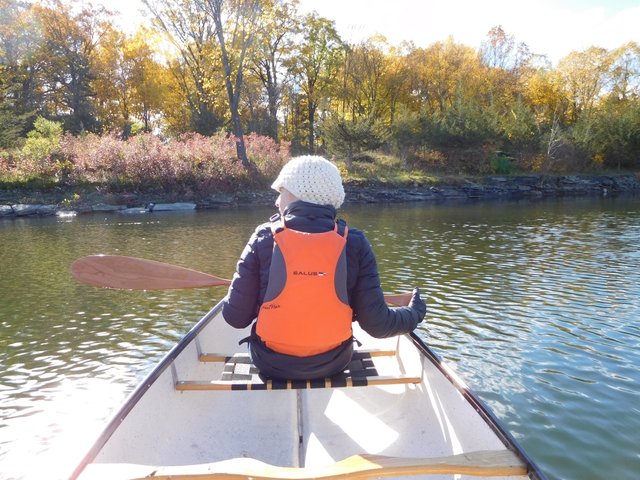
On October 19th, of this year, my husband and I celebrated our Silver Wedding Anniversary. We marked the occasion by paddling a very, very small section of the Great Loop. I wrote about our canoeing adventure and if you are interested and missed it, you can read it here:
If you've been following along with me, on my journey, you'll appreciate that my life is full of synchronicity.
I don't think that I am unusual. I think everyone's life is like that, I just seem to be awake enough and present to recognize when it is happening. A few days before our anniversary was no exception.
We had driven, about 40 minutes from our house, to a city called Peterborough. Peterborough is located in the province of Ontario, in Canada.
Professionally, I hold certification in Aromatherapy and for the last 20 years, I have been shopping at a local store in Peterborough to buy my essential oils and blending supplies. Usually, I just purchase the items that I need on-line but occasionally, I like to make the trip into the store so that I can consult with the buyers and test oils in person. The day we went to the store, it was really busy for the staff. Most of their business is on-line these days and so the shop was a hive of activity as orders were being filled to meet shipping deadlines. This wasn't an inconvenience. I had taken holidays and had time to leisurely browse in the store.
While I was taking my time and enjoying my retail experience, a lady walked into the store. She was looking for a cool-air essential oil diffuser and some essential oils to go along with it. Knowing that the staff was swamped, I jumped in and had a good discussion with her and helped her to choose what would work for her. We spoke for about 30 minutes. We developed an instant rapport and after making her purchases we exchanged contact information. This wonderful lady's name is: Ann Wipper and she has given me her permission to share her name, picture and this incredible story, which is very layered with love of many kinds.
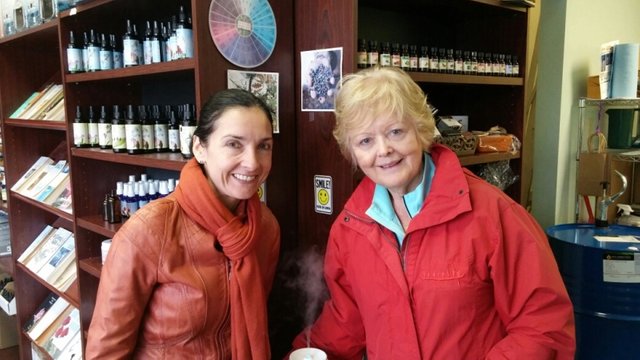
This is a picture of Ann and I and the diffuser she bought at the essential oil store.
My job, in this incredible on-going story, (that is quite literally transcending space and time), is to share it with as many people as I can.
It's taken me 3 weeks to get my head wrapped around this complex encounter. I have shed many tears because it's so heart warming, on so many levels.
It's full of love, devotion, determination and the drive to culturally survive.
I'm going to give it my best shot to do it justice. You'll just have to trust me, when I say, it's a tall order.
It turns out Ann's late husband was Kirk Wipper. Kirk passed away, in 2011, at the age of 88 but he continues to live on through his remarkable legacy that is the Canadian Canoe Museum.
Kirk founded the museum in 1997 with the help of many volunteers. He'd been collecting rare canoes since 1950 and most of his collection is still part of the Canadian Canoe Museum's 600+ piece inventory.
Kirk was instrumental in establishing Canada's "outdoor education curriculum" through the University of Toronto. He was a natural environmentalists before anyone even knew what that meant. It is my opinion, that he has single- handedly helped to preserve the cultural traditions of numerous native North American indigenous peoples and Canadians as a whole.
Today, North American indigenous people come to the Canadian Canoe Museum to learn how to build canoes and kayaks in the ways of their ancestors. These are skills being lost as each elder dies without being able to pass-on the knowledge.
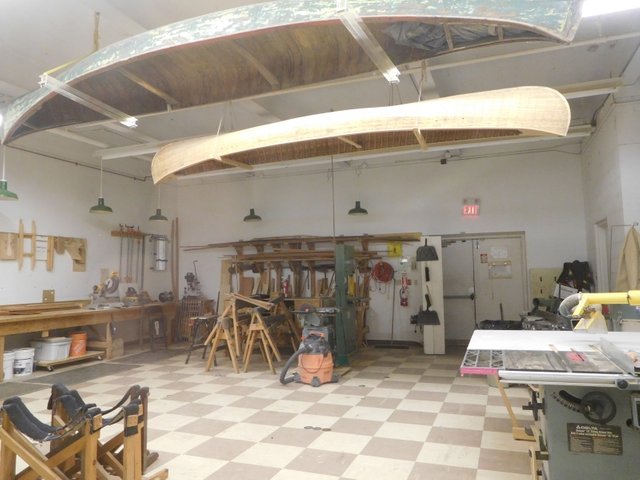
Due to his efforts in preserving this history and the history of how the country of Canada came to be the nation it is today, Kirk was presented with the Order of Canada. This is the second highest honour any Canadian can receive for a lifetime's worth of remarkable service and one of countless honours bestowed upon this gentleman, while he was alive.
Without further ado, let's go to the Canadian Canoe Museum and feel the love.
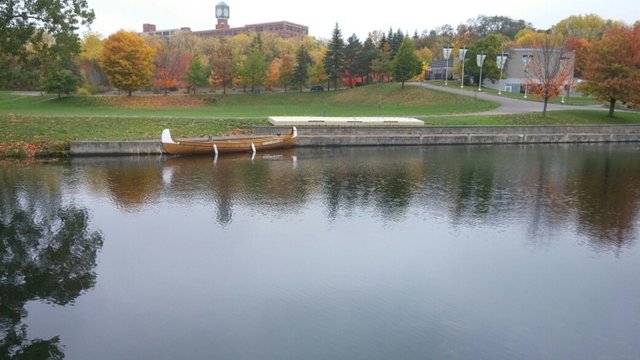
Soon to be located strategically beside the Peterborough lift lock, the location couldn't be anymore idyllic.
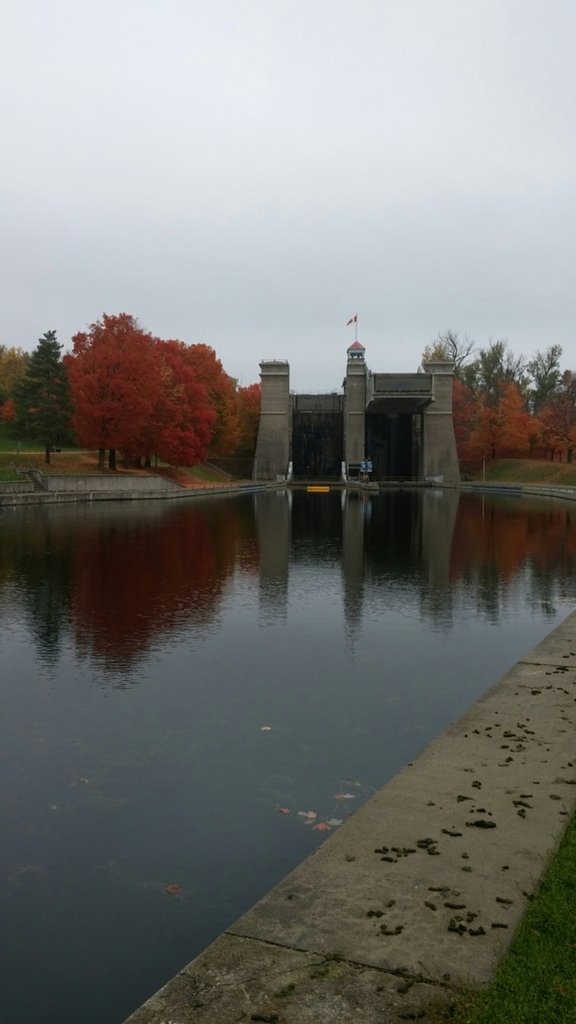
This is a lift lock. It's one of two such locks in the Trent-Severn Waterway system. It physically lifts water-craft from a lower elevation of water to a higher elevation of water in the system.
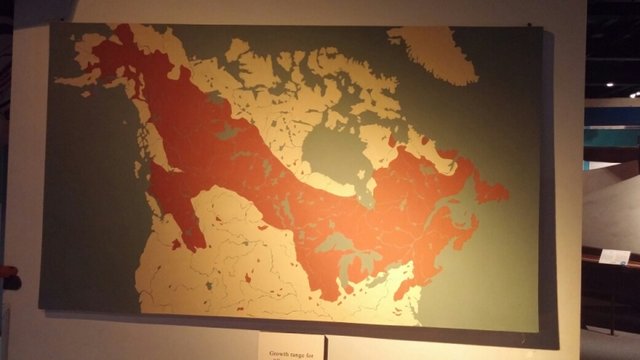
Notice all the blue areas in this map. They are all waterways and in someway or another, they are all interconnected. Theoretically, you can travel from one coast to the other coast of Canada by following the internal fresh water, waterways. It's a long way but it can and has been done. It is exactly how Canada as a country was discovered, explored and settled.
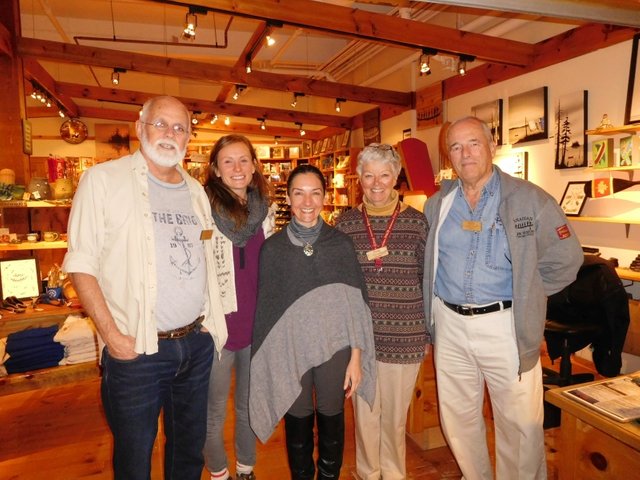
This is a picture of me with 3 museum volunteers and 1 museum employee. The museum is run on a million dollar budget that is raised every year by fundraising initiatives. The museum is not supported by government grants. There are approximately 20 paid employees and 150 volunteers who keep the doors of the museum open. It's a true labour of love, by all involved.
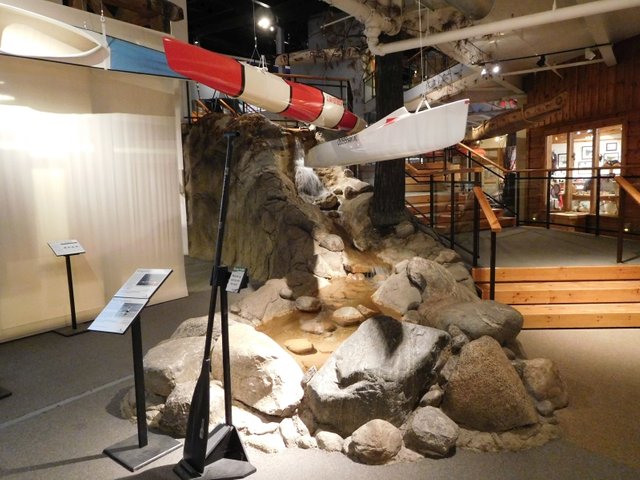
This is a waterfall feature that is just inside the doors of the museum. As the story goes, when the museum opened, water from 8 different major Canadian waterway systems was added to the re-circulating water. This was done in a effort to recognize every part of the country. It's a cascade of Canadian love.
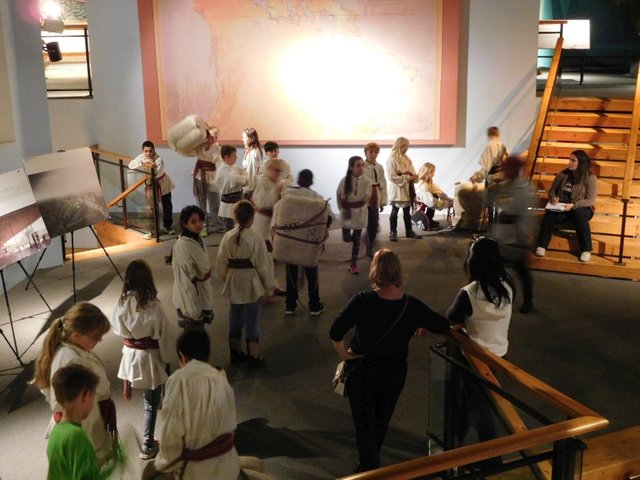
When we arrived at the museum, it was approximately 10:00 am on a Thursday morning. We were the only ones in the facility and had the place to ourselves before a school group of children arrived to receive a history lesson.
In Canada, we have 2 official languages that are recognized. French and English. This was a French class, receiving their entire lesson in French. The museum is a very interactive teaching facility. Before the lesson began, all the children dressed in early period costumes. The big white shirts and sashes are unique to early French Canadian voyageurs, who were heavily involved in transporting animal pelts by canoe across the country in the mid-1600's.
A lot of love goes into keeping this educational programming going and accessible to everyone. The museum normally has an admission charge of $12, but on Thursdays between 5pm and 8 pm, it's free for anyone to go.
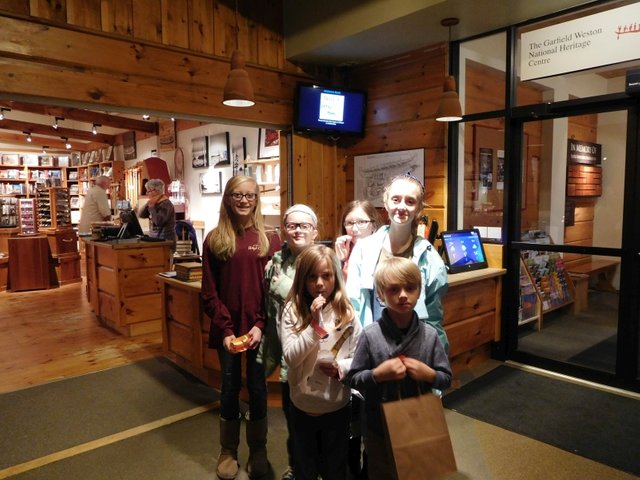
While I am on the topic of education, about an hour after we had arrived at the museum, a mother and her 6 children arrived. They came all the way from Alabama, USA and their mother was home-schooling them. She told me that they had been traveling around North America and everyday, she takes them to an educational attraction and teaches them. On this day, they were learning about Canada's deep connection to the canoe...all thanks to Kirk Wipper's love of the outdoors and preserving Canadian history. This family was full of love.
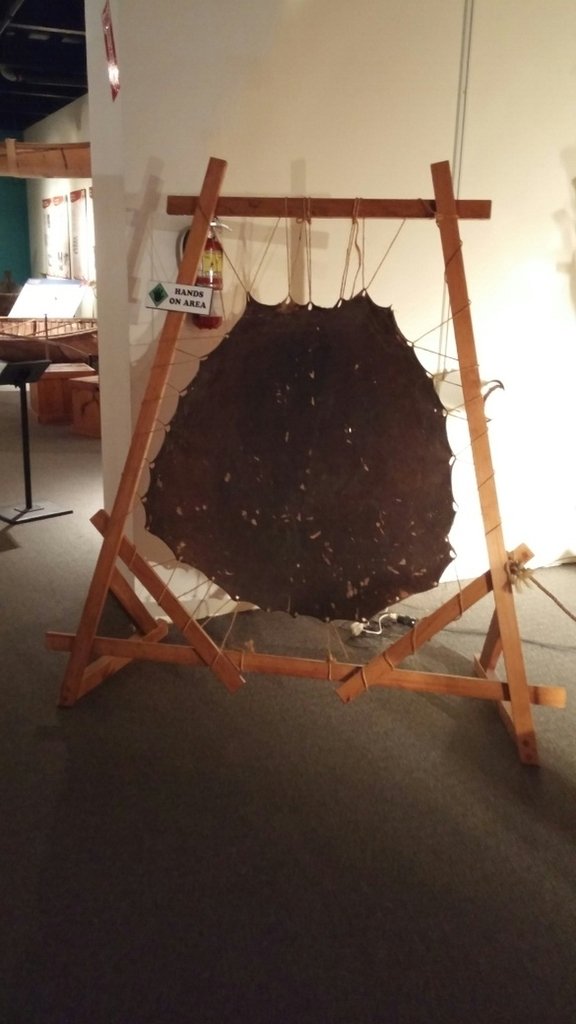
Many of the museum's exhibits are interactive. You can touch things, like various animal skins and pelts.
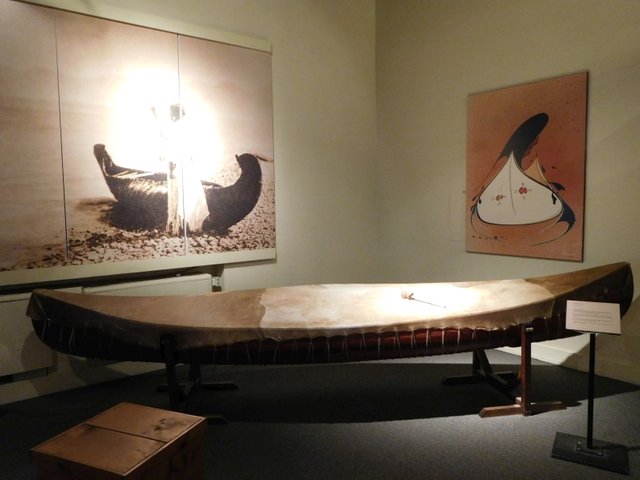
You can play a canoe that has been re-purposed into a drum.
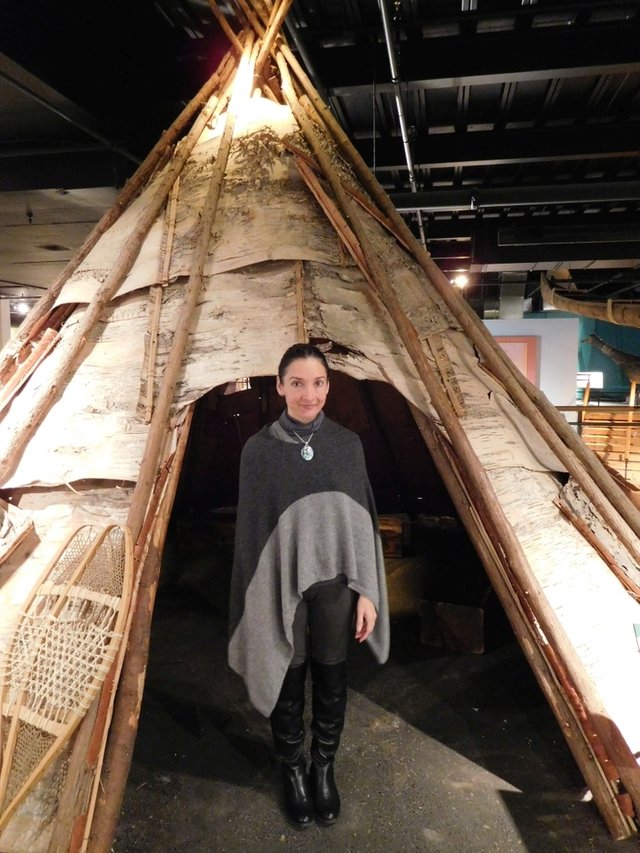
You can see how a teepee is constructed and you can go right inside.
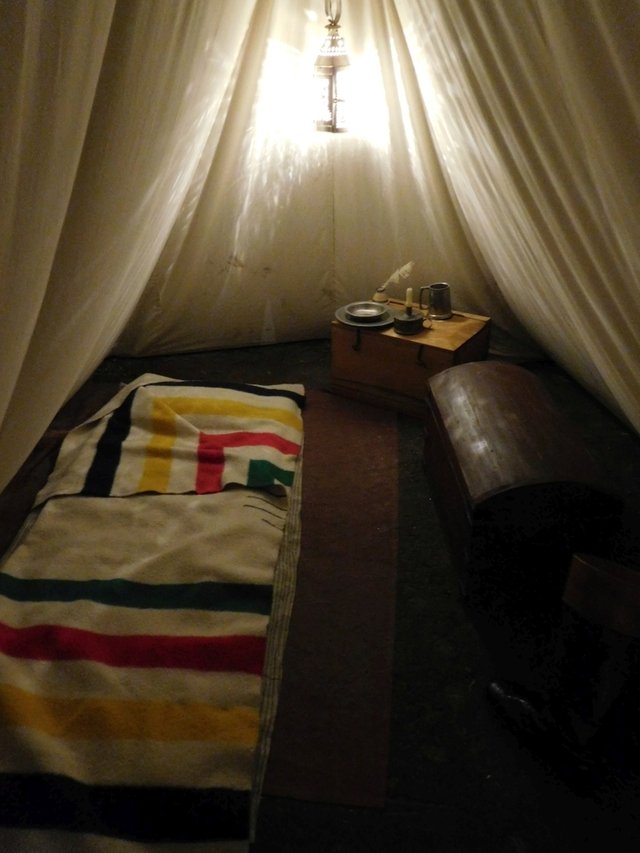
There are various other forms of encampments that you can go inside and explore.
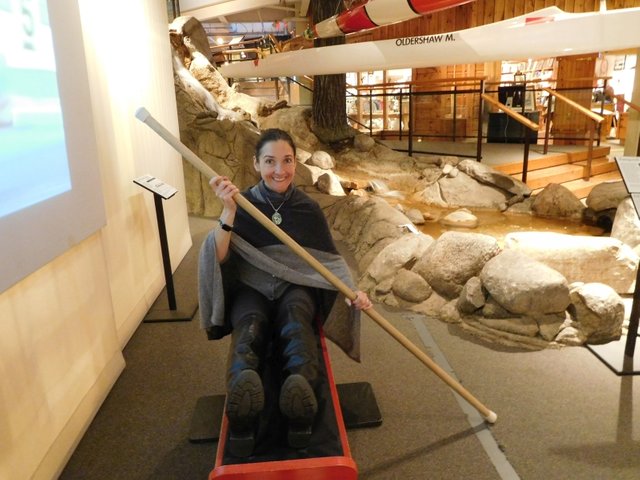
You can also try your luck at what it takes to balance a racing kayak. This contraption simulates the actual width of a racing vessel and how "tipsy" they actually are. You need strong core muscles not to fall off.
I listened to and read so many wonderful heart-warming stories, it was hard to choose only one or two to share.
I have to say that my favourite story was a rescue effort on Kirk's part.
He was always saving rare canoes from wrought and destruction. One such canoe was a Haida racing vessel. The Haida communities are a group of islands that stretch from northern British Columbia to Alaska.
The canoe was 58 feet long. To put this into perspective a transport truck trailer is 53 feet long.
In order to bring it across the country to be saved, Kirk brought it on the top of the cab of his pick-up truck. He had to take it by ferry to the main land. They almost didn't let him on the ferry due to the length and questionable transportation methods.

When Kirk got to the main land, he quickly realized that he would not be able to navigate the switch-backs of mountain road driving so he decided to travel through the upper United States so that he could avoid the mountain terrain.
When he got to the American boarder he was promptly stopped by State Troopers and had to explain his motivation to save history and this beautiful piece of art. The Troopers gave him a personal escort, 1,000's of miles all the way to Ontario, Canada.
For free!
From one State to another, Kirk was passed from one set of Troopers to another, until he could safely make his way home, back into Canada.
Here's the canoe. I had to photograph it in sections to capture both ends of it:

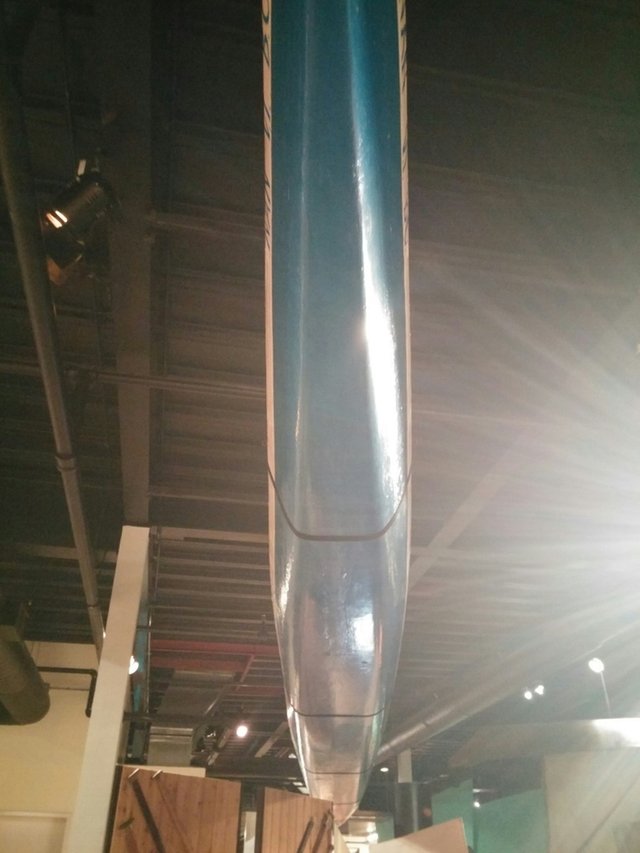
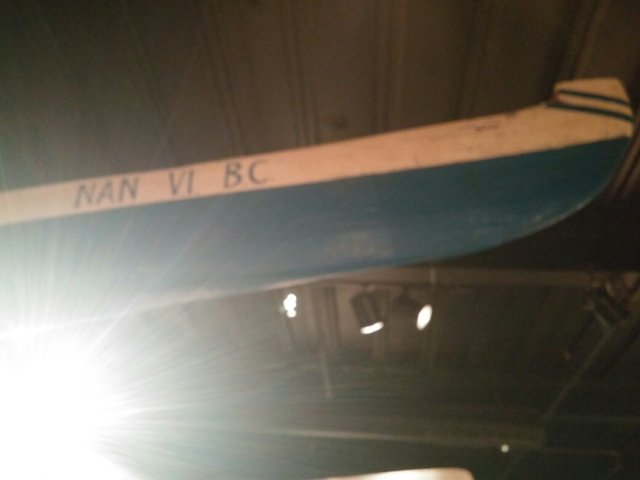
Thanks to the compassion of our American friends this beauty survived!
I took over 200 different photographs at the museum. I won't share them all, just a few of the more extraordinary ones.
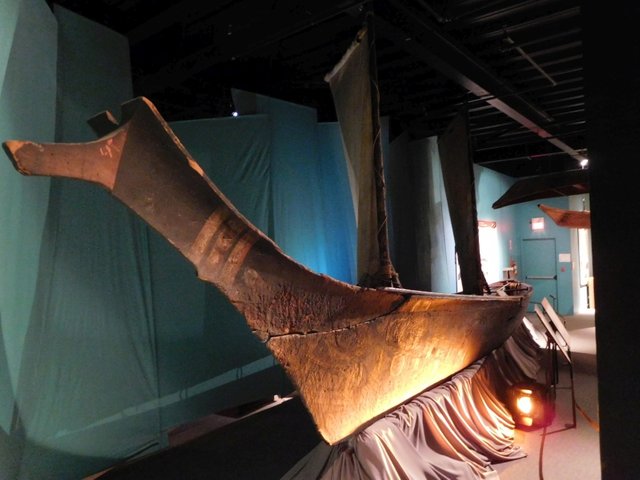
This one felt "Viking" to me and it had sails.
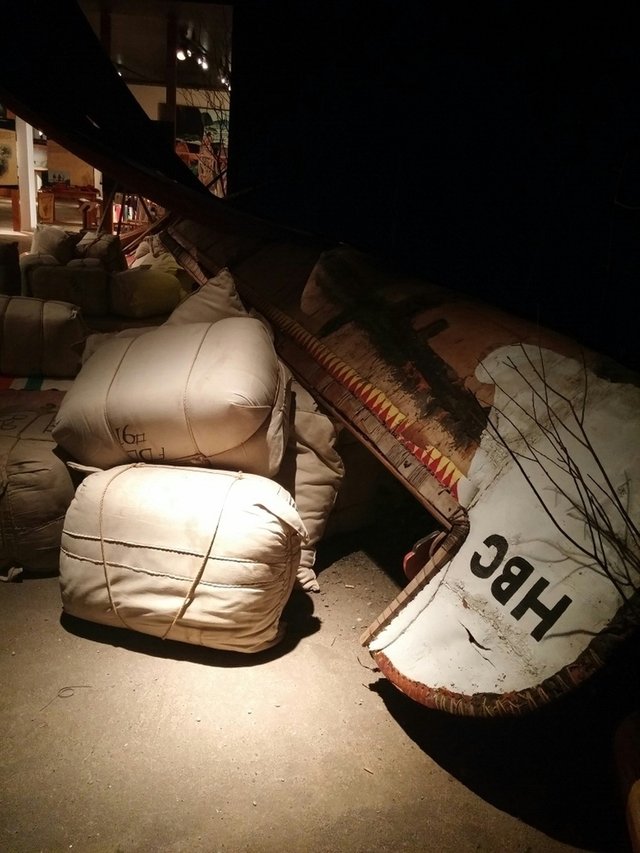
This is a Hudson Bay Company fur trading canoe. Its equivalent today is a transport truck for long hauls across the country.
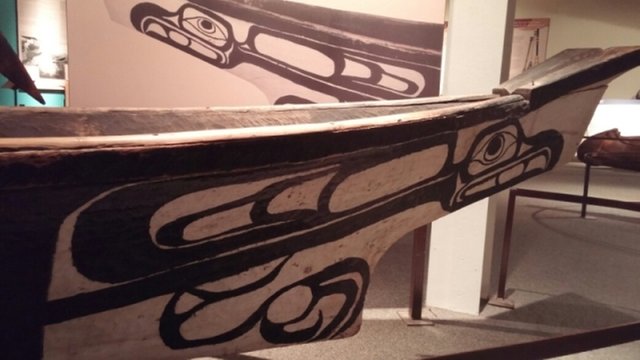
This one is Haida.
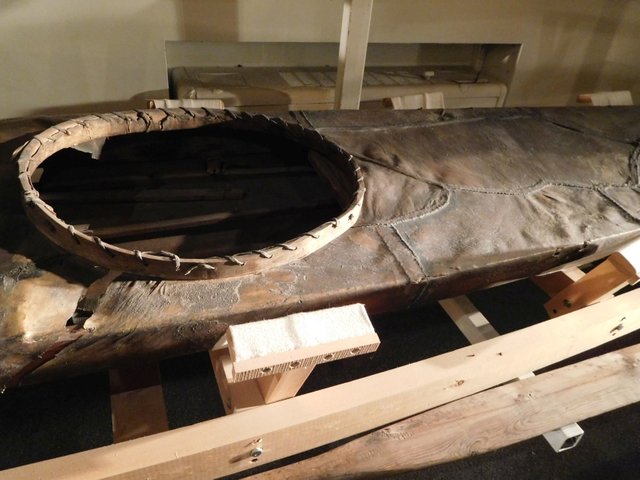
Notice the precision hand stitching on this early Kayak. It's covered in animal skin. It was used to hunt whales with a spear.
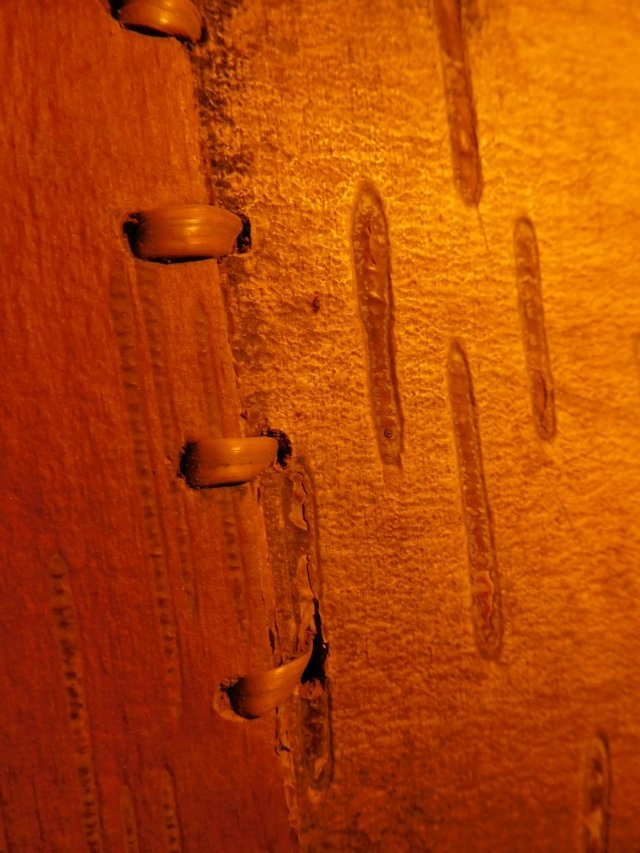
A close-up of more hand stitching. It's full of love and care.
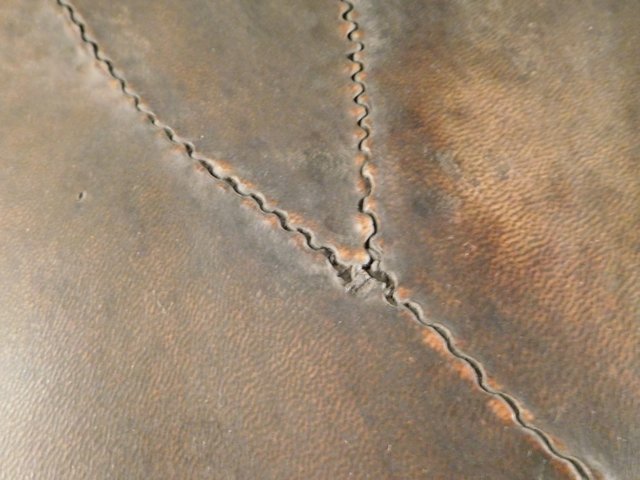
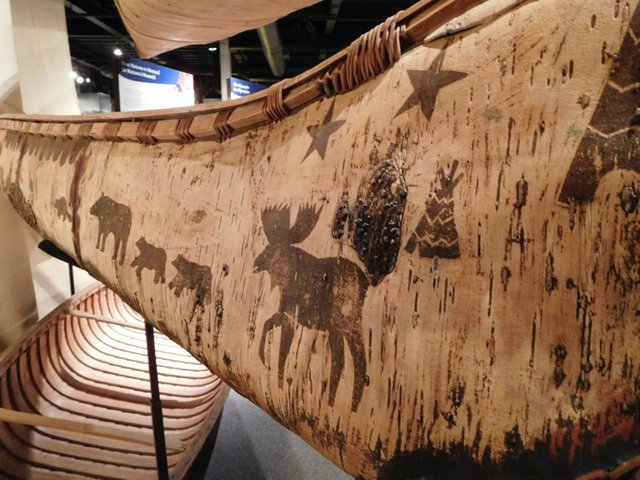
Here's a birch bark canoe. Often, these were skinned in huge pieces of birch bark, patched together with bear grease and pine tar and then painted.

This one is very portable.
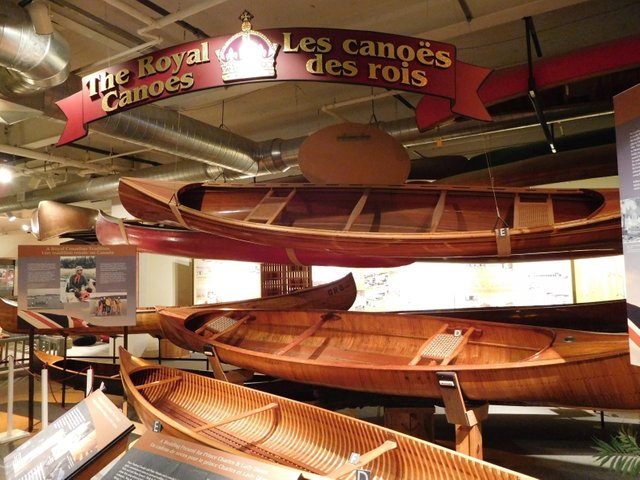
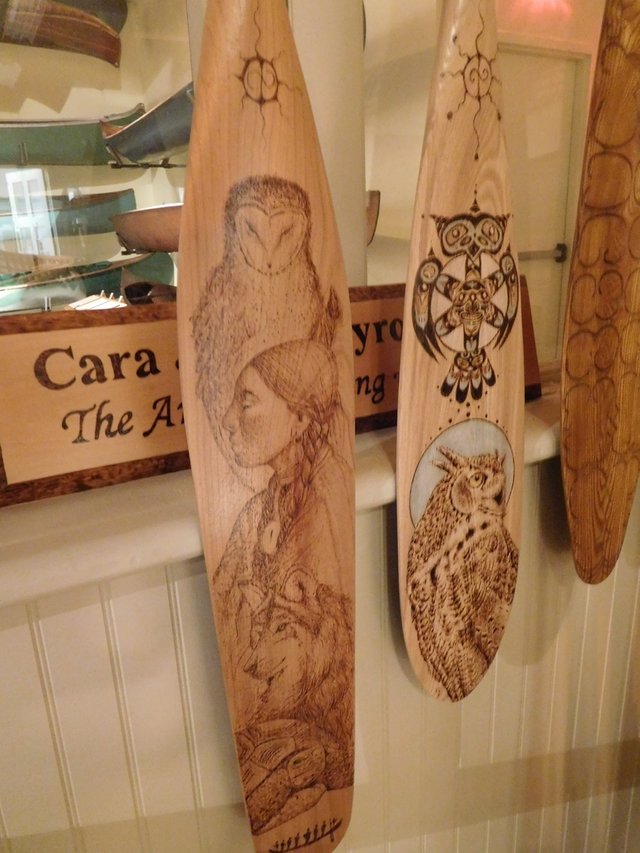
Look at all the love that went into making these beautiful paddles.
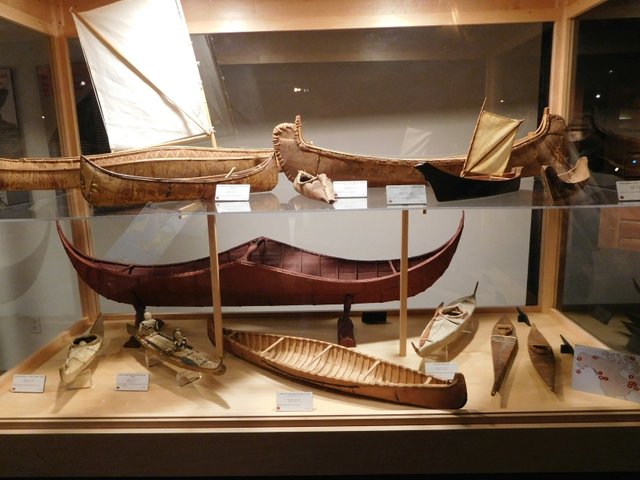
There's even a miniature section.
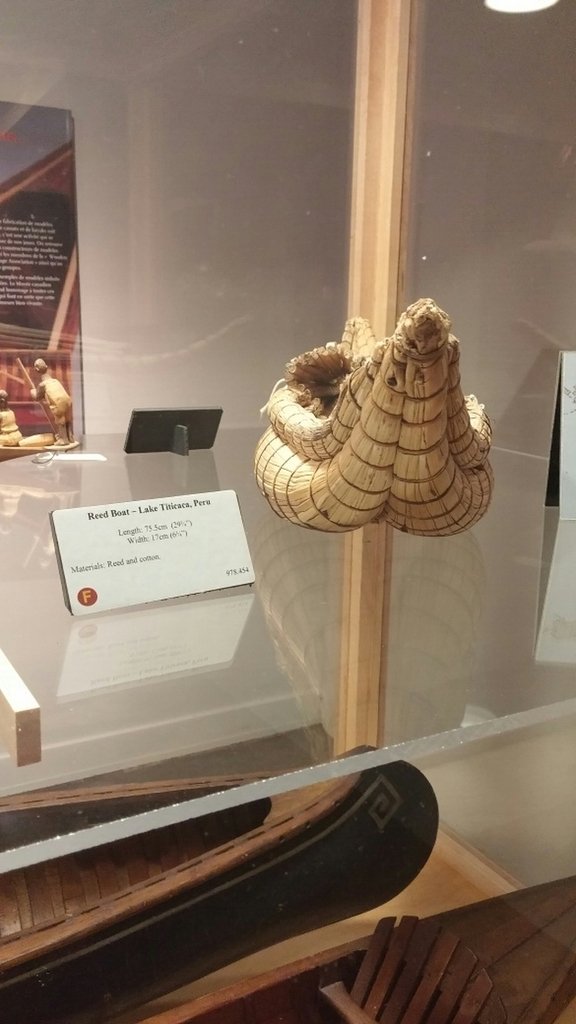
Tiny bits of love were everywhere.
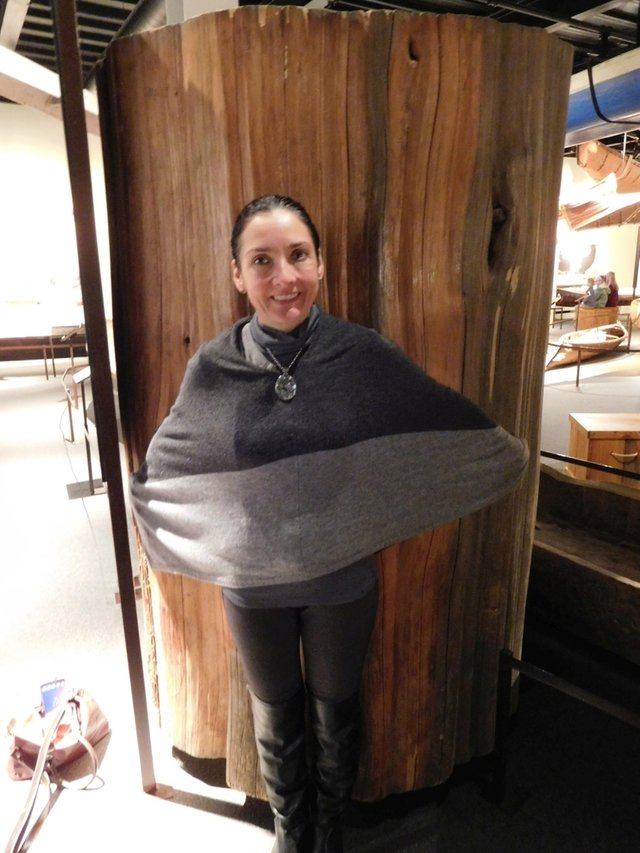
Thanks for joining me on my exploration of the Canadian Canoe Museum. A big "thank-you" goes out to all the volunteers at the museum, especially David, who happily answered all my questions.
For further information, about the museum's hours and workshops, don't hesitate to visit the website at: http://www.canoemuseum.ca
I am so fortunate that I bumped into Ann and that I could take the time to meet her and learn about her husband, Kirk.
If it wasn't for this chance meeting, I wouldn't have made the effort to go to the museum and I most certainly wouldn't have been able to share the story with everyone on Steemit and save the information on the blockchain, for future generations to access.
Ann and Kirk's collective love of each other, nature, the environment, education and history knows no boundaries and Canada is lucky to be able to count them as Canadians.
I welcome any comments and I invite you to follow me as I continue along on my journey.
Love to you all.
~RebeccaRyan
WOW! What a great posting and such a great sharing of information... On my next posting about transportation, in the @Steemphotocontest, I'll be posting the picture of a 80 foot canoe from Haida Gwaii... Seeing the one you have in there, it made me wonder about how it was acquired and whether or not it is legitimately there in the first place as so many totem poles, canoes and an array of artefacts were stolen from the Haida Nation has the years went by, during the colonization of the islands here... Again, thank you for this amazing post! Namaste :)
Thank you @eric-boucher! I was brought to tears many times in the museum during my visit because these cultures, their customs and way of life are being desecrated and lost. I was thankful that I could play a small role in preserving the information on the blockchain. I am now following you so that I can read your posts too! Namaste.
Thank you so very much for your efforts to help us all in these matters. I feel the same in relation to it too. I am glad to read that you are going to be following my postings as time goes by, thanks. I hope you enjoy too. Namaste :)
Great post and awesome photos.
Thanks for sharing!
I follow you now :)
Thank you! I really appreciate it. :)
Welcome :)
Look forward to seeing more !
Canada has such great canoeing! And what country has more of a canoeing heritage? I can't think of one. I have enjoyed some great canoe trips in Canada - Quetico, Algonquin, Killarney, La verendrye, iceout on the Maitland, and more. There is more than a lifetime's worth of incredible possibilities. I'm so glad that Kirk Wipper and the Canoe Museum have saved some of that vast heritage. And that you shared it with us. I'll have to visit that museum sometime. What a great thing.
Thank you @haphazard-hstead! I'm thrilled that you can appreciate what an integral part the canoe is to the fabric that holds Canada together. You've definitely paddle some great Canadian water in your day! All those places you listed are magnificent.
Without this method of transportation our Country wouldn't exist because the terrain and natural environment can be incredibly hostile. I am convinced that our early explorers wouldn't have survived without it.
The work that the museum does for education is invaluable. Especially the piece about teaching indigenous people how to build canoes and kayaks in the ways that their ancestors did. It is preserving so many different traditions and customs. The museum runs workshops of all kinds, not just canoe building. I think it deserves more recognition than it receives. I looked at the "guest book" the day I went to the museum. I went back as far as 2 weeks and counted visitors from 6 different countries. It's probably the largest single collection of canoes and kayaks in the world.
I really like reading about the voyageurs. They lived a tough, tough life. It's incredible how far they traveled every year for the fur trade. It's a little easier for all of us now, thank goodness!
It is incredible to think about what their lives were like. It's a wonder that any of them survived. A fully loaded trader's canoe weighs 3500 pounds. If it was tipped, I read that the cargo would crush and drown the occupants. Damn scary given how aggressive some of the waterways are, that they regularly travelled.
And from what I read, a lot of them didn't even know how to swim. Learning to swim is a pretty recent thing for broad swaths of people to learn. People are something else - and so tough.
Agreed. We live pretty wimpy compared to the demands of everyday life 300+ years ago in North America. I am thankful that I don't have to but I've been working on improving my skills, just in case I have to someday.
Wonderful story, I'm glad you shared it! My husband and I both experience synchronicity often too and I think you're right, it's when you're awake and present enough to recognise it that you can draw meaning and appreciate it fully. I see it happening sometimes in the lives of my friends, but often they don't see it, and often don't believe it even if you point it out! Oh well :-)
Oh well is right! I always think that these things come to us when we are more intellectually evolved. Some just never make the leap at all and some need more time. Until then, we can accept and keep moving on. :)
Indeed :-)
Loved the post, sorry I did not see it earlier. Thanks for all the photographs of the museum. Really shows what they have there. I will go when I can. You might enjoy a book I've read, though you probably know all about it already, I wouldn't be at all surprised if it was required reading in Canadian schools. It's called "Chips From a Wilderness Log", by Calvin Rutstrum. It's fascinating short story/essays about being a wilderness canoeist and back-country traveler. They truly were a tough lot in days of old. Thanks again for the great post.
Thanks @ddschteinn!
I actually haven't heard of that book before but sounds like something that I would enjoy.
It's hard to believe that any of the early settlers even survived...extremely resilient souls. If you like paddling you'll enjoy the museum. We were there for about 3 hours but could've have spent longer. Well worth the effort and time.